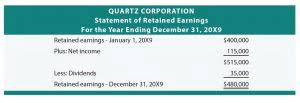
T Accounts always follow the same structure to record entries – with “debits” on the left, and “credits” on the right. Angela is certified in Xero, QuickBooks, and FreeAgent accounting software. To simplify bookkeeping, she created lots of easy-to-use Excel bookkeeping templates.
Rent Expense Account
Using T-accounts to record such transactions may obscure the timing and matching of revenue and expenses, leading to inaccurate financial statements. When starting out in accounting, T accounts can help you make sense of transactions in an account. It is one payroll of the best ways to keep debits and credits straight, visually.
- Consider a multinational corporation with diverse revenue streams and complex financial instruments.
- Using T accounts, you’ve figured out where everything goes, so you can record this transaction in your accounting software.
- However, T-accounts lack seamless integration with these technological advancements, constraining their utility in a digital age.
- Understanding the perks and uses of T-accounts can seriously boost your business’s financial management skills.
Format

In this example, the column balances are tallied, so you can understand how the T-accounts work. The account balances are calculated by adding the debit and credit columns together. This sum is typically displayed at the bottom of the corresponding side of the account. T accounts provide a clear and concise way to track the flow of financial transactions for individual accounts. They facilitate the recording and analysis of transactions, making it easier to prepare financial statements and understand the financial health of an organization.
What is Qualified Business Income?
The debits are always transferred to the left side and the credits are always transferred to the right side of Accounting for Churches T-accounts. The matching principle in accrual accounting states that all expenses must match with revenues generated during the period. The T-account guides accountants on what to enter in a ledger to get an adjusting balance so that revenues equal expenses. T accounts serve as the basis for preparing financial statements by providing a detailed record of transactions for each account. The balances in T accounts are aggregated to create the balances needed for financial statement preparation.
Do you own a business?
A financial professional will t accounts offer guidance based on the information provided and offer a no-obligation call to better understand your situation. A T-account can have many different types of transactions within it but they must always follow this same basic format. Now these ledgers can be used to create an unadjusted trial balance in the next step of the accounting cycle.

They can set up T-accounts for individual stocks or mutual funds, recording the purchase price and subsequent dividends or capital gains. This helps them visualize the performance of their investments and make informed decisions about buying, selling, or holding. For example, stakeholders may demand financial reports in different currencies, formats, or aggregation levels to facilitate decision-making and analysis.
Identify the Transaction Type

T Accounts allows businesses that use double entry to distinguish easily between those debits and credits. At the top of the spreadsheet, it shows the total debits and credits for all the accounts. A T-Account records the debits and credits that affect an account, as well as the running balance of the account.